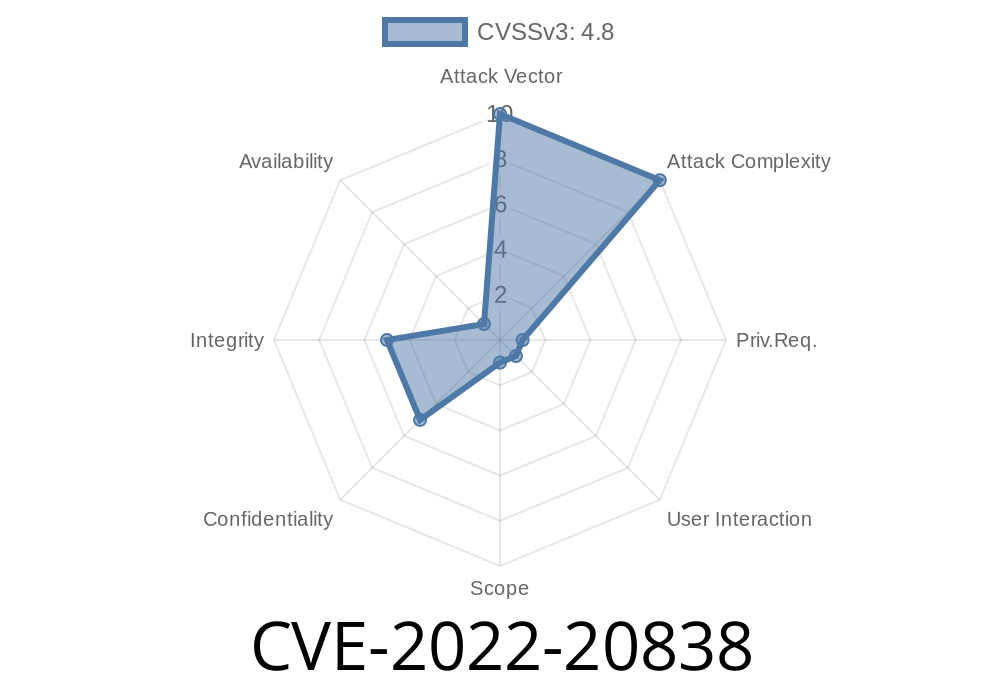Multiple vulnerabilities have been discovered in the web-based management interface of Cisco Firepower Management Center (FMC) software. These vulnerabilities, collectively identified under CVE-2022-20838, could potentially allow an authenticated, remote attacker to conduct a stored cross-site scripting (XSS) attack against a user of the interface of an affected device. This post aims to provide a comprehensive overview of these vulnerabilities, including code snippets, links to original references, and details regarding potential exploit scenarios.
Vulnerability Details
The root cause of these vulnerabilities is insufficient validation of user-supplied input by the web-based management interface. By inserting specially crafted input into various data fields in the affected interface, an attacker could potentially exploit these vulnerabilities to execute arbitrary script code in the context of the interface or access sensitive, browser-based information. In some cases, exploitation may also result in a temporary availability impact on portions of the FMC Dashboard.
A hypothetical malicious payload for this type of XSS attack might look like this
<input type="text" value="<script>alert('XSS')</script>"/>
An attacker could potentially insert this payload, or similar malicious payloads, into various data fields within the affected FMC interface to perform a stored XSS attack.
Exploit Scenarios
1. An attacker with valid authentication credentials for the FMC web-based management interface could exploit these vulnerabilities by inserting a maliciously crafted payload into data fields within the interface, potentially causing arbitrary script code to be executed in the context of the interface.
2. If an attacker is able to intercept and modify data being sent between an FMC device and a user's browser, they may also be able to exploit these vulnerabilities by injecting a malicious payload that is subsequently stored on the FMC device, ultimately leading to an XSS attack.
Original References
For more detailed technical information on CVE-2022-20838, it is highly recommended to review Cisco's own advisory report on these vulnerabilities. The advisory also provides information on affected software releases and recommended actions to mitigate the potential impact of these vulnerabilities.
- Cisco Security Advisory: https://tools.cisco.com/security/center/content/CiscoSecurityAdvisory/cisco-sa-fmc-xss-ABQnnNQT
Mitigation and Remediation
Cisco has released software updates that address these vulnerabilities. Users are advised to update their FMC Software to a fixed version as soon as possible. Additionally, it is essential to follow best practice guidelines, such as ensuring the use of strong, unique authentication credentials for the web-based management interface and limiting access to the interface to trusted individuals and networks.
In summary, CVE-2022-20838 represents a collection of multiple stored XSS vulnerabilities in the web-based management interface of Cisco Firepower Management Center (FMC) software. Proper validation of user input is crucial for ensuring the security and integrity of web-based management interfaces. By updating to a fixed software version and following best practice guidelines for access to the FMC interface, administrators can help to mitigate the potential impact of these vulnerabilities on their environment.
Timeline
Published on: 11/15/2022 21:15:00 UTC
Last modified on: 11/18/2022 18:14:00 UTC
